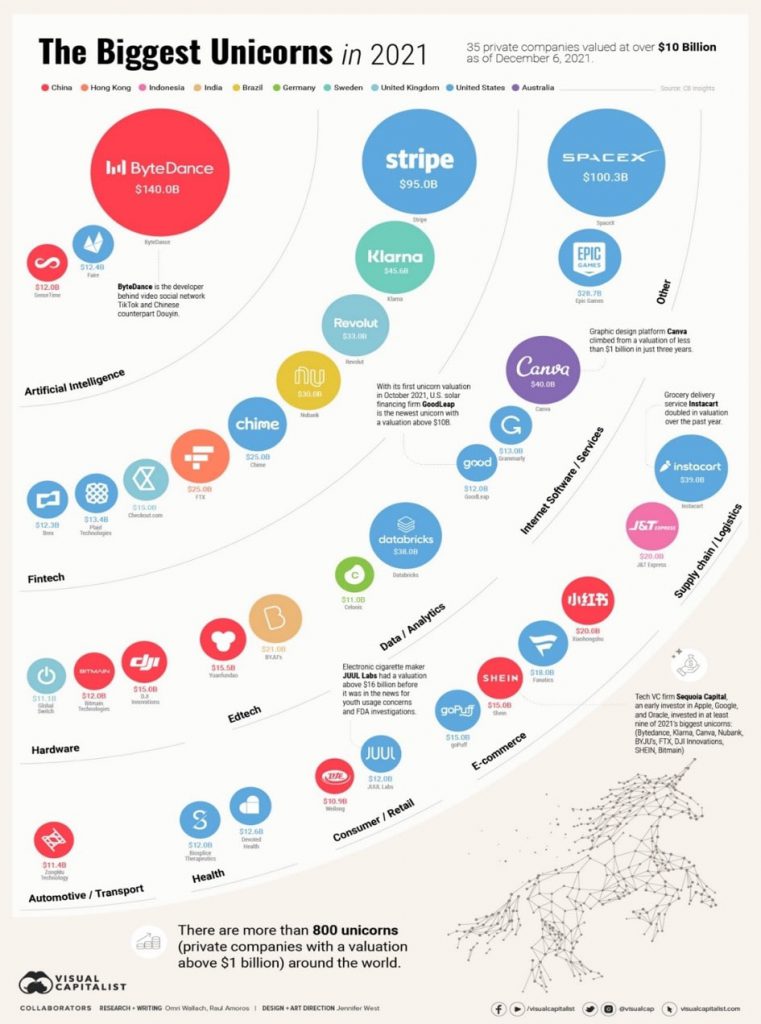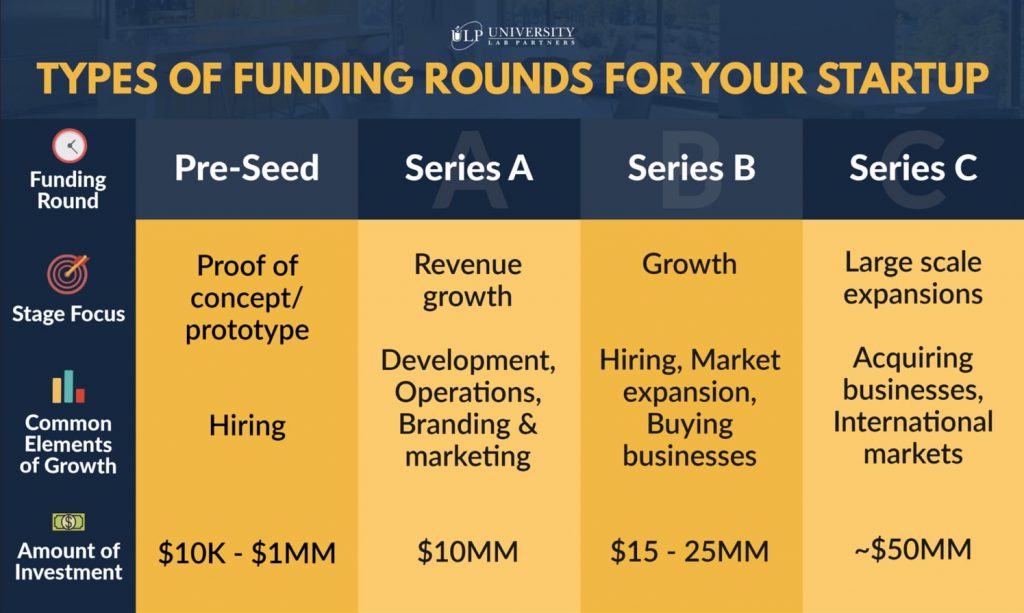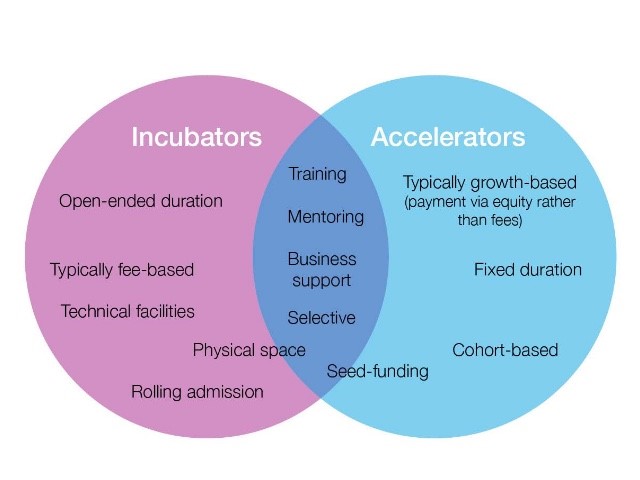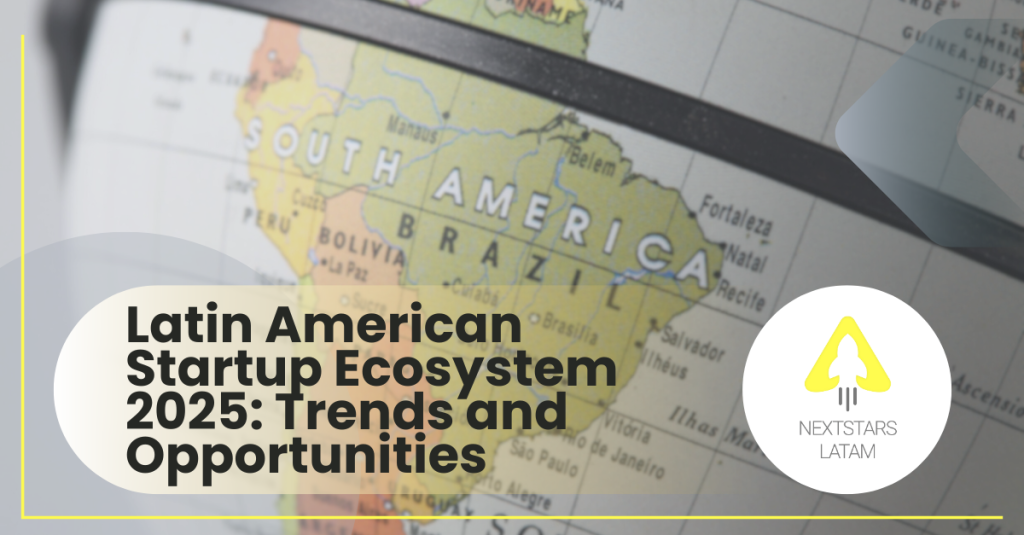“We are our choices. Build yourself a great story” from Jeff Bezos. Every person will have their own story so what is yours? Building a start-up is like planting a seed. It would require tireless effort, time, and focus to grow the tree before potentially harvesting its fruits. It might not be the right path for everyone, but it is proven to be a great journey for those who love challenges. This article is for those who consider building a start-up or are at the early stage of the start-up.
Since start-up brings new ideas to the marketplace, start-ups will continuously encounter various challenges. Here are common areas most start-ups will experience:
1. How is the founding team established?
2. What is a minimum viable product (MVP)?
3. How do you advertise your product?
4. How do you get funding?
5. How do you train yourself to develop together with your business?
What is a start-up?
A start-up is a company in the earliest stages of getting established with the purpose to develop a unique product or service for which the founders believe there will be a high demand in the market. Innovation is at the root of the start-up, whether the innovation lies in the business model or the product/service. Having the validated product/service through trials and errors, start-ups enter scale-up stage with several funding rounds to rapidly growth and reach targeted audience at a rapid speed. This is a typical route that all start-ups come across.

Unicorn is a term given only to start-ups that have a valuation of over a billion. A few Canadian unicorns include Wealthsimple (an online investment manager platform), Dapper Labs (blockchain games and digital collectibles), and PointClickCare (management services for long-term care facilities) [1]. Looking over our border, US and China lead the world with some of the largest unicorns. Omri Wallach (Visual Capitalist) summarized some of the most successful start-ups in the diagram below [2].
The founding team:
The founding team is the heart of a start-up and is a crucial part of defining a successful start-up. The most important aspect of forming the team is understanding yourself (your strength and weakness). Working in the area you love would greatly facilitate the road to the success of your start-up. Additionally, you should crystallize your mission, vision, and values in a succinct way that is compelling to others. Knowing your weakness, you can find a co-founder who shares a similar vision and possesses knowledge in areas you are weak at. Moreover, having a co-founder who has experience and connections in the industry that your start-up is competing in can be a great advantage to kick-start your business. Pillar suggested a few methods to look for co-founders [3]:
- Consider people who you’ve worked well within the past
- Work your network (in-person or virtual)
- Reach out to people you know/admire who have the skills you want
- Reach out to potential stakeholders (a person working in the sector you want to join)
- Tap into local university job boards
- Reach out to graduate students
- Join a Hackathon
- Through a formal program (a program designed for co-founders to network and meet)
Minimum Viable Product (MVP)
“Minimum viable product” is a term coined by Frank Robinson and popularized by Eric Ries, founder of the Lean Startup methodology [4]. MVP is a development technique in which a product with the most basic features to meet the founders’ goal is introduced to customers to gather maximum feedback with the least effort. The product would be scaled up after sufficient feedback is received for future refinement.
There is a large portion of people who are thinking to develop the most perfect product they possibly can before approaching the market. However, without feedback from actual clients/users, the initial product only fits the needs of the founder team themselves. Therefore, the MVP method is used to help founders prioritize crucial tasks and refine them over time through clients’ feedback. World-famous Uber, Dropbox, Figma, and Slack started their way to unicorn status with MVPs (The Forbes). AMgrade suggested the steps to develop an MVP as in the figure below [5].
Founders are heavily involved in all of these steps in an MVP. Market research is conducted to see who your customers are, who your competitors are, and how you can make your product stand out. The next step is to brainstorm ideas to address questions such as what your product solves, what value your product brings to users, and why would the clients pay for your product. User flow, step 3, is an important process in which you put yourself into the clients’ shoes. You can experience yourself the procedures that clients will perform from the beginning till the end of your product or system. This can help to prioritize the tasks to be executed in the next step. Sorting out from the list of features the crucial (absolutely required for the product to function) to nice-to-have features on your product.
When everything is ready to go, it is time to create the MVP. It is critical for founders to have the knowledge and be strongly involved in the process of building an MVP. Sometimes it would be wiser to outsource the MVP components to others at the right cost and quality so the product can reach the market faster. Finally, validating your MVP with a small sample size of customers is an essential step to gather valuable feedback to further refine your product/business model. It is also important to have measurement units, in terms of quantity, to compare the effectiveness between versions or methods being deployed. Keep in mind that MVP is a technique to test out the product in the market to gather feedback before the scaling stage. Hence, the goal of the process is to push the product out to the market as quickly as possible to learn through feedback.

Suggestions
Here are some suggestions to bring your product to market faster [6–7]:
- Prioritization: There will be multiple ideas floating around but it is up to you to decide what is the core to focus on
- Scheduling: Exam your workflow, analyze the bottleneck, and create a solid strategy
- Goals: Set weekly goals (mini milestones) to reach
- Resource Allocation: Plan ahead for budget spending and resources needed
- Partner with smaller suppliers: Larger suppliers will not likely work closely with you and disruptive technology will likely come from smaller suppliers you’ve never heard of.
- Cross-functional work team: The advantage of smaller companies is flexibility. Working in a small group can get information across faster and adjust the product immediately. Even when the number of people grow, a few small groups/departments with team leads and reoccurring weekly meeting can be a great way to divide up the tasks and push innovations.
Marketing
Marketing refers to activities a company undertakes to promote the buying or selling of a product or service. Marketing can be done by the start-ups themselves or by affiliates on behalf of the company (Investopedia) [8]. Marketing is an essential tool to introduce your brand/product to consumers. There is a wide range of techniques and methods to advertise for your product/service ranging from free of cost to paid service. Here are a few common methods [9–11]:
- Website: Website holds multiple purposes. Firstly, a website can be used to quickly introduce your product and service. Secondly, it is an address that users can search for if they are curious about your brand and product. Finally, consumers can find more information and contact you through your website.
- Email: Add a form to your website (or landing page) to collect email addresses from visitors, then start sharing updates about your services, contents, products, and anything else that might be of interest to them. It is best to use your company email to look more professional when communicating with customers.
- Social Media: Facebook, Instagram, TikTok, and Twitter each have more than a billion users worldwide, which means potential customers are at your fingertips. You can target specific segments of people with ads for your startup.
- Offline promotion: Brochure, business cards, postcards, and vouchers are sources for promotion.
- Networking: Talking to different people and joining events in the industry that your product is developed for can be a great opportunity to introduce others to your products.
- Brand ambassador: Finding a human representation of your brand. It can be a highly effective way to spread your organization’s message. For instance, endorsement from celebrities, professional personnel, or widely trusted people.
- Channel marking: This is a practice of working with a third party to take your products/services to market. Often, channel partners are businesses in and of themselves. Hence, what you really have is multiple separate businesses selling your product. The key benefit of channel marketing is that your products can reach audiences that you would otherwise not have had access to. This method can be faster and more effective than traditional methods.
Funding
Initial funding of a start-up mainly is from the founders’ money (e.g their savings, family, friends, etc). Additionally, founders can borrow money to operate their business such as obtaining a line of credit or loans. For instance, the Business Development Bank of Canada (BDC) has multiple loans and financing programs for small businesses. There are also government grand and subsidiaries that can be available for certain businesses/industries. If manpower is needed, exploring volunteers and special need programs can be a viable option. Moreover, wage subsidiaries for university/college students are also a great program for employers to explore potential employees. Some subsidiaries cover up to 75 percent of the student wage, which means employers only need to pay $2,500 for every $10,000 paid salary. A lot more grants and subsidiaries are available to be further explored through the internet and networking.
After having a validated model, the company can go through multiple funding programs and rounds to obtain capital. The goal is to obtain as much capital as the founders can so the company can rapidly grow and expand. University Lab Partners presented the funding life science of start-ups in the figure below [12].

Here are a few indicators that your startup is ready to seek for pre-seed funding [13]:
- You can speak to product/market fit (you may not have tested this, however)
- You’re about to make your first few hires
- You might not have a fully developed product or MVP, but you have something to show (an early prototype)
- You have garnered some early interest from potential customers
- You’ve developed a reasonable revenue model
Seed fundraising provides you with funds even before your business has started earning. Two knowledge area founders must know [14]:
- Financial knowledge: As a founder having financial knowledge becomes of utmost importance for you. You must know the process of dividing equity and have an accurate valuation of your business. And also, a thorough understanding of your income and expenditure. This is not only required to ensure your business does well but also to safeguard it. With your equity stake, there also comes decision-making power. If you are not well equipped with the number game, you might end up losing your decision-making power in your business. Additionally, CEO and employees’ salaries should be discussed with your investors prior to investment so that there is no discord post-funding. According to Kruze, CEO pay themselves on average $119,000 annually after raising seed financing (research is conducted with over 125 funded companies).
- Legal Knowledge: The process of seed fundraising will involve a lot of documents and there will be contracts. To get through all this unscratched, you would need legal knowledge and a good lawyer by your side.
Business and Operations
Here is a list of possible start-up costs (from nerdwallet) [15]:
1. Incorporate fees: The fee varies between provinces (approx. $300).
2. Equipment cost: depending on the industry, it can be free of cost if you already own one to hundreds of thousands of dollars if you need to buy or build the machine.
3. Inventory cost: if you need to hold some inventory or spare parts, 17% to 25% is a good amount to reserve for your product.
4. Marketing cost: for a start-up, 0–10% of your total budget is a good amount to spend on marketing
5. Payroll: This section can account for 25–50% of the total budget.
6. Professional consultants: Sometimes you need help dealing with taxes and bookkeeping but you don’t want to hire an accountant, you can use accounting software or seek a professional consultant. It could cost you $1,000 to $5,000 per year. However, if you have a quite simple structure and willing to explore, you can do most of the things by yourself and free of cost.
7. Taxes: Based on your revenue, you probably need to set aside a certain amount to pay cooperate tax. It can be confusing but working with an accountant can help you pay as little as possible.
Self Development
“I think it’s very difficult to start companies, it’s quite painful,” Elon Musk told students from Draper University [16]. The path might not be right for everyone. However, if you believe your ideas can help a lot of people and you enjoy solving challenging problems, it will be a great path for you to pursue. Self-development is an important aspect not only to yourself but also to the growth of the start-up. As Warren Buffet said: “By far the best investment you can make is in yourself.” [17]. Learning is a common theme among the founders. Learning to innovate, learning from feedback, and learning from mistakes are a few examples of why learning is so important. Continuously equipping yourself with more knowledge would greatly improve the success rate of your start-up. Here are a few ways to deal with challenging problems you have not solved or done before:
- Internet: The Internet has great resources on all possible things you can think of. It is a great way to dive into any unfamiliar knowledge you want to know. Additionally, it is a great way to connect with people around the world.
- Teammates: Talking to your colleagues and friends could get you some great ideas or possible directions to explore.
- Connections/Network: This is a critical resource, especially for start-ups. Since start-up is at the initial stage, connections could help start-up solve all sorts of issues. For instance, with some connections, a company can outsource a component of the product/service at a reasonable price.
- E-learning platforms: There are great amounts of online learning platforms that are available to entrepreneurs ranging from free of cost to paid service. For example, if you are banking with ATB Financial (Business) [18], you can enjoy their free entrepreneur courses. Harvest Builder also provides some free learning courses for new start-ups [19]. Plenty of courses is available online if you spend some time searching for them.
- Mentoring/Training: Mostly mentoring and training will come with costs. Two worthy mentions are accelerators and incubators (see diagram below from Robbie Richards on MassChallenge) [20]. A start-up accelerator is an organization that offers mentorship, capital, and connections to investors and business partners. It’s designed for selected start-ups with promising MVPs and founders, as a way to rapidly scale growth. In contrast, incubators are companies that are primarily focused on early-stage start-ups and help entrepreneurs build their companies from the ground up [21]. They provide support to these start-ups by linking them to potential sources of funding; they provide coaching and mentoring, office space for them to work out of as well as access to legal counsels and networking opportunities.

Reference:
1. https://www.failory.com/startups/canada-unicorns
2. https://www.visualcapitalist.com/the-worlds-biggest-startups-top-unicorns-of-2021/
3. https://www.pillar.vc/playlist/guide/how-to-find-a-co-founder-or-early-startup-team-member/
5. https://amgrade.com/how-can-mvp-benefit-the-startup-and-how-to-build-one-right/
6. https://mixpanel.com/blog/5-tips-for-faster-product-releases/
7. https://www.industrystar.com/blog/2019/01/7-ways-take-your-product-ideas-market-faster/
8. https://www.investopedia.com/terms/m/marketing.asp
9. https://mailchimp.com/resources/startup-marketing-strategy/
10. https://influencermarketinghub.com/what-is-ambassador-marketing/
11. https://www.triptych.com/blog/what-is-channel-marketing
12. https://www.universitylabpartners.org/blog/series-a-b-c-funding-startup
13. https://finmark.com/how-to-raise-pre-seed-funding/
14. https://alcorfund.com/insight/seed-funding/
15. https://www.nerdwallet.com/article/small-business/business-startup-costs
17. https://www.cnbc.com/2019/08/31/billionaire-investor-warren-buffetts-best-advice.html
18. https://www.atb.com/business/accounts-and-services/entrepreneur-services/atb-x-accelerator/
19. https://www.harvest.builders/academy
20. https://masschallenge.org/article/accelerators-vs-incubators
21. https://www.nutcache.com/blog/incubators-vs-accelerators-understanding-the-difference/





